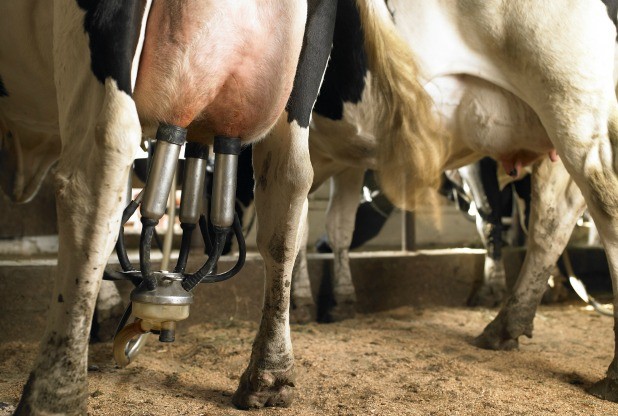 A smallholder dairy farmer in Bomet is inspiring fellow farmers to embrace low cost zero grazing to increase milk production and tame disease spread, at a time when limited pasture has seen most farmers graze their animals outside.
A smallholder dairy farmer in Bomet is inspiring fellow farmers to embrace low cost zero grazing to increase milk production and tame disease spread, at a time when limited pasture has seen most farmers graze their animals outside.
Scenes of cows and goats grazing in paths and roads especially in rural areas are common place. This has been occasioned by dwindling pasture that has either forced farmers to sell off some of their cows, or let them scavenge looking for pasture. And therein lies the problem. Scientists say cows that are let to move around have been noted to produce less milk than those that are fed are confined. Again the scavenging cows have been identified as the biggest carriers of diseases and pests.
Rose Chepkwony a farmer in Bomet county was in a similar situation. Her small farm could not take care of her three cows and so she decided to let them scavenge for pasture. But the milk output was dismal and she was always spending money on treating them. Her light bulb moment when she attended a farmer training programme and was advised on how to create a low cost zero grazing unit which would ensure that the cows enjoyed equal feeds which would in turn boost their milk production. Two years she boasts of 14 cows and five calves with an Ayshire cow that used to give her 12 litres of milk now giving her 28 litres. “I had really become frustrated since milk was my only source of income and that is what I used to rely on to feed my family and pay my children's school fees. Now in my small quarter of an acre piece of land, I am earning more than I can imagine,” Rose said.
After training she sourced for locally available materials like eucalyptus tree to construct the roof while the timber was used to construct the feeding trough. She started with a structure that accommodated three cows and only expanded whenever she got a new cow. The only major expense was buying cement and iron sheets. “Seeing the difference that this made and how relaxed my cows were which increased their milk production, I decided to increase the size of my herd,” sh said.
That took two loans and bought to high value cows.
“But just having a nice structure doesnt increase milk production. Good feeding mechanisms count aloy,” Rose said.
She has perfected the art of feeding her cows with all the nutrients while insulating herself from the skyrocketing conventional feed prices. She makes and mixes various animal foods that she grows or sources locally like fishmeal and legumes. Not far from where she lives she has rented half-an-acre land where grows wonder shrubs like Lucerne and desmodium.
Five of her cows are milked, which earns her on average Sh100,000 every month by selling her milk to New KCC and local hotels.
She has become a model farmer with smallholder farmers coming from far and wide to learn about fodder management and zero grazing. “The biggest problem for smallholder dairy farmers currently is the feeds. With rains having failed and prices of feeds going astronomically high, farmers have to innovate if they are to survive. I welcome them to come see how I have,” Rose said.
For more information contacts below:
Contact: Rose Chepkwony
Number: 0723037754.
Write comment (0 Comments)














